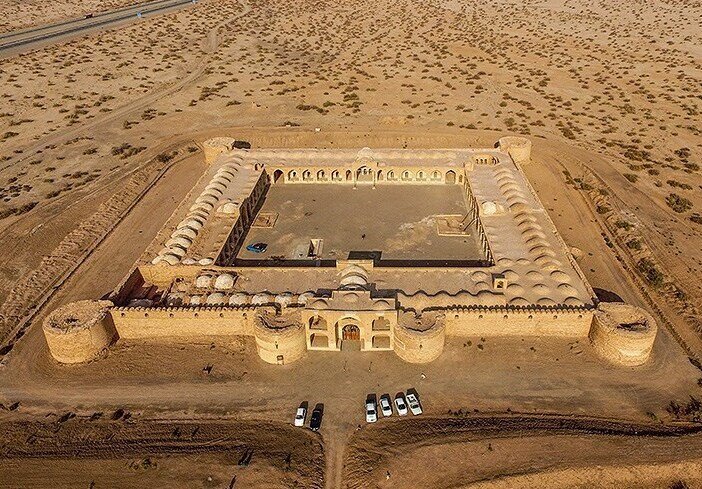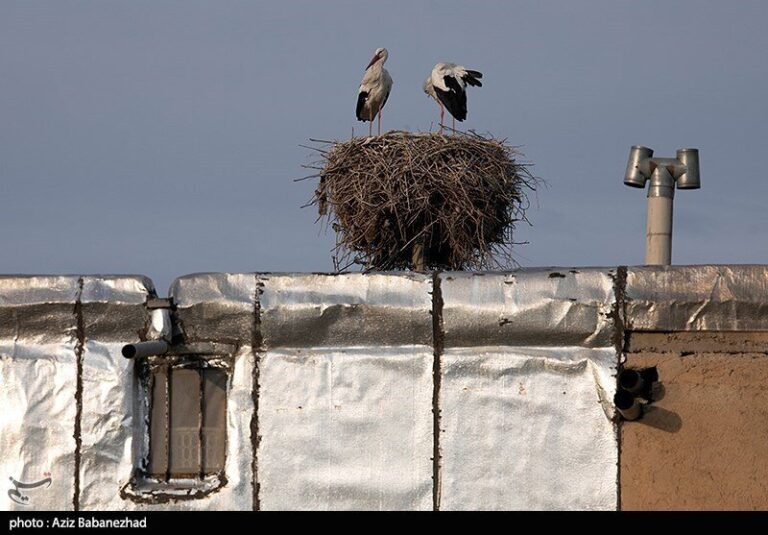Discover Deyr-e Gachin: The Majestic Mother of Iran’s Caravanserais
Located just 80 kilometers northeast of Qom, the caravanserai of Deyr-e Gachin stands as a remarkable testament to Iran’s rich history and architectural grandeur. Known affectionately as the “Mother of Iranian Caravanserais,” this extraordinary monument is strategically positioned along the historic Silk Roads and the ancient Ray-to-Qom route, nestled within the expansive Kavir National Park. Deyr-e Gachin was recently honored by being inscribed on the UNESCO World Heritage List in 2023, recognized as one of the 54 Iranian caravanserais under the title “The Persian Caravanserai.”
Historically, caravanserais played a crucial role as roadside inns that provided shelter, food, and water to caravans, traders, and pilgrims. While they may seem isolated in the vast desert landscape, their locations were meticulously chosen based on the availability of water sources, geographical features, and security needs.
A Glimpse Inside Deyr-e Gachin
Upon entering through the main gateway, visitors are greeted by a vast courtyard surrounded by single-story rooms. The architectural layout includes:
- A mosque
- A bathhouse
- A mill
- Special rooms with three doors leading to the exterior
This architectural diversity enriches the experience for visitors, providing a glimpse into Iran’s historical past.
A Legacy of Centuries
The origins of Deyr-e Gachin are believed to date back to the Sassanid era, with some historical accounts linking it to Ardeshir I, who reigned from 211/2 CE to 224. The caravanserai has undergone various restorations throughout the Seljuk, Safavid, and Qajar periods, ensuring that it retains both its grandeur and functionality.
Architectural Marvel
Spanning an impressive 12,000 square meters, Deyr-e Gachin features a design reminiscent of a giant Chahar-Taq, characterized by its ancient square-shaped brick room topped with a domed roof. Key architectural elements include:
- Four rectangular towers and two half-towers flanking the entrance
- A mosque with a 300-square-meter prayer space
- A stone mill and bathhouse
- Over 40 rooms and two wells for fresh water
- Staircases leading to the rooftop
Additional structures nearby include a fire temple on the western side, a fortress, a brick kiln, water reservoirs, and a cemetery. The fortified wall surrounding the caravanserai stands over five meters high, one meter thick, and stretches eighty meters long, complete with crenels for defense.
A notable aspect of Deyr-e Gachin is the exquisite craftsmanship of the Sassanid-era bricks, which feature intricate details. Many of these bricks were repurposed during the Seljuk dynasty restorations, preserving the authentic charm of the site.
The Persian Caravanserai Concept
The term caravanserai is derived from the combination of “caravan” (a group of travelers) and “sara” (a building). These structures typically featured:
- Massive portals supported by elevated load-bearing walls
- Guest rooms arranged around a central courtyard
- Stables situated behind the guest rooms with entrances in the corners of the yard
For centuries, caravanserais served as vital hubs within a rich network of travel and trade, offering necessary amenities for caravans, pilgrims, and other travelers. Experiencing a stay in or even a visit to a centuries-old caravanserai allows travelers to connect with history and enjoy a unique glimpse into a bygone era.
A Historical Perspective
The earliest caravanserais in Iran were constructed during the Achaemenid era (550 – 330 BC). Centuries later, during the reign of Shah Abbas I from 1588 to 1629, a significant network of caravanserais was established across the country. These roadside inns were strategically constructed along ancient caravan routes throughout the Muslim world, providing shelter for people, goods, and animals. The Silk Road is perhaps the most renowned example, dotted with numerous caravanserais that facilitated trade and travel.
Today, Deyr-e Gachin stands not only as a remarkable architectural achievement but also as a symbol of Iran’s rich cultural heritage, attracting visitors eager to explore its fascinating history.






